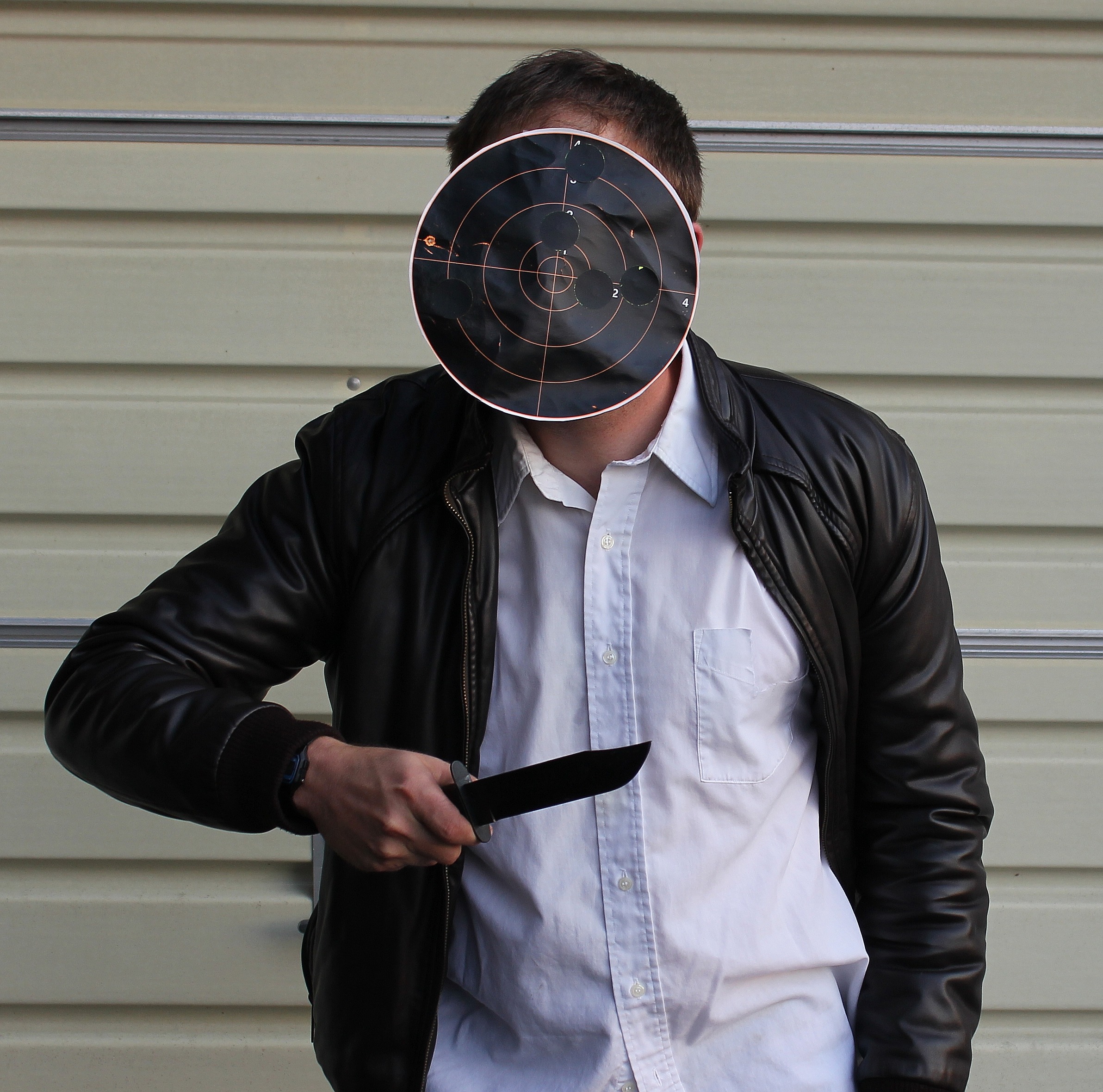Historical Context
Bullseye targets are fine for competition use, but I find them wholly unsatisfactory for defense-based training. Put simply, you are never going to be mugged by a bullseye or have one break into your house.
In his book On Killing: the Psychological Cost of Learning to Kill in War and Society, Lt. Col. Dave Grossman examined the phenomenal rise in the percentage of American soldiers who were actively firing at the enemy between WWII and Vietnam. He asserts that there was a firing rate increase of over 450% in our armed forces during that time period (Grossman, p 181). The reason behind the vast increase in effectiveness has to do with training.
In WWII, soldiers were taught to shoot at fixed-range, static targets that did not at all resemble the human form (p 177). There was very little psychological connection between the act of firing at a target and the act of firing at a live human being. In contrast, by Vietnam, our soldiers were firing rapidly at pop-up targets which resembled enemy soldiers. This classical conditioning helped to increase firing rates, warfighter effectiveness, and warfighter survivability in combat.
Realistic Scenarios
I endeavor to train new shooters on anatomically-correct targets. The famous Thug target was an advancement in realism, but I prefer to use an image that is a photograph of a person. Again, this is simply a way to further the classical conditioning that increases target engagement and survival rates. It is for this reason (and my higher-than-average consumption of targets) that I turn to Targets Online.
One of the factors I look for when selecting a target is the resemblance to a probable real-life attacker. For this reason, I rule out targets depicting female assailants. A cursory examination of FBI Uniform Crime Reports will reveal that the vast majority (nearly 90%) of homicide offenders are male. Furthermore, the majority of homicides committed by females are perpetrated against family or domestic partners (Homicide Trends in the United States, 1980-2008: Annual rates for 2009 and 2010, Page 10, Table 6). Therefore, it makes little sense to have the student fire at an image of a middle-aged woman.
Perhaps the most statistically improbable scenario I have seen depicted in a target is that of what appears to be a 100lb white woman holding a 250lb African American man hostage. This situation is so unlikely that I find the target laughable. Perhaps it was produced as a joke.
Continuing with the theme of probability, I skip past the Bank-Robber series of targets when browsing online. These targets are fine (and actually quite entertaining) if you want to re-create a scene from movies like Heat or Point Break, but the probability that you’ll encounter a heavily armed thief in a business suit is exceedingly small. You may very well encounter a thief in a business suit (dishonest stock broker, corporate embezzler, etc.) in your daily routine, but most likely, the man will not be armed. It is, unfortunately, still illegal to shoot such reprobates.
Demographics and Target Selection
Your targets should closely resemble the probable assailants in your area. It is for this reason that I discourage using targets depicting an African-American assailant for students living and working in rural areas. While an urban-dwelling student my very well encounter an African-American attacker, most people living in white farming areas almost certainly will not. Thus, using a target depicting an African-American or Hispanic attacker serves little use and tends to make the students and the instructor look like racists.
Interestingly, while there are a plethora of targets depicting Caucasians, target types depicting African-Americans are extremely limited. Given that nationally, African-Americans make up 52% of homicide offenders (Cooper, Smith, Page 12, Table 7), I am surprised to find that they represent only 5.4% of the photo-realistic targets I surveyed. In my research, I have found very few targets that depict an armed African-American assailant. The most competitively priced one is sold by Targets Online. Far more targets are available depicting children as aggressors. I am at a loss to think of a suitable reason for this lack of selection.
Furthermore, given the disturbing resurgence of White-Supremacist groups (and highly-publicized killings involving White Supremacists) in recent years, I would expect to see targets depicting Neo-Nazis sporting exaggeratedly large swastikas. Though there are plenty of targets that could possibly depict such attackers, the only swastika-bearing target I have been able to find is a target of a Nazi Zombie.
Whatever the reason for this dearth of realistic targets, I hope that a wider range will be offered in the future.
Hostages and Zombies
Unless you are a member of law enforcement, the likelihood that you will encounter a hostage situation is exceedingly small. Only less statistically likely than this is the chance that you will encounter a pack of roving undead. While I am indeed a proponent of increasing zombie awareness, it is a bit further down the list than such humdrum (yet more common) events as mugging, assault, burglary and rape.
Practicing with images of shuffling ghouls can be downright entertaining, I’ll give you that. What I would caution against is the modification of your technique when using such targets. If you practice the Failure to Stop Drill (also known as the Mozambique Drill), then by all means – KEEP DOING IT. Do not shift to a headshot-only drill when engaging zombie paper targets, as this may weaken your muscle memory and actually disadvantage you in a time of crisis.
That, and Zombie Dogs are just too terrifying to even contemplate.
By Allen Cosby
Latest posts by 53gr (see all)
- H&H Medical: H Bandage and Thin H Bandage – January 2, 2020
- S&W M&P M2.0 Series – January 9, 2017
- SIG Sauer P938 – October 19, 2016

Leave a Reply